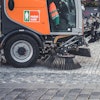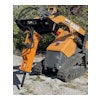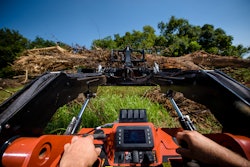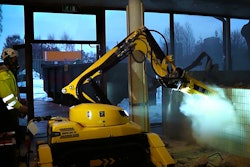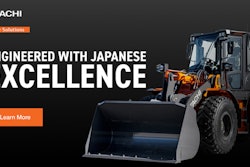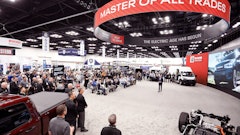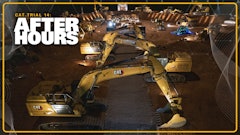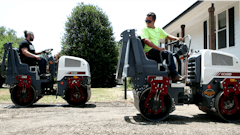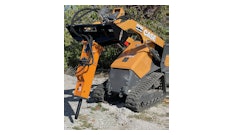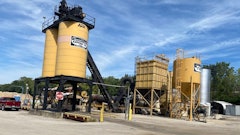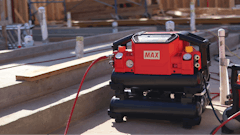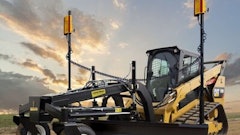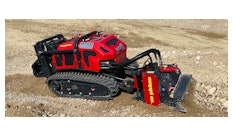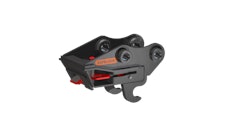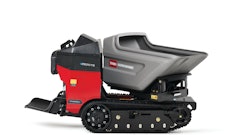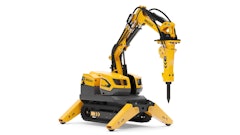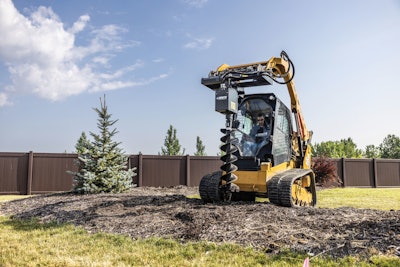
With the right mix of attachments, contractors can turn their compact equipment into a veritable Swiss Army knife for the jobsite. However, stocking an attachment toolbox can get expensive quickly, especially for construction and landscaping outfits with a wide service offering and multiple carriers (and possibly carrier brands). The trick is finding the right balance of dependability, versatility and price. Here are three considerations that can help maximize return on investment (ROI) when it comes to compact equipment attachments.
1. Are You Investing in the Right Duty Level for Your Application?
Most attachment manufacturers offer attachments at several duty levels. These are generally classified as light, standard or heavy/severe based on construction and intended use.
Light-duty attachments typically have a lighter overall weight. They might be manufactured with lower-grade steel or lack the weighty reinforcements of more durable attachments.
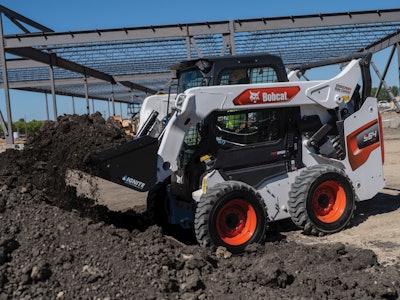 The heavier the attachment, the fewer additional materials the carrier can safely handle, so select the weight of a bucket carefully.Ignite Attachments
The heavier the attachment, the fewer additional materials the carrier can safely handle, so select the weight of a bucket carefully.Ignite Attachments
Heavy- or severe-duty is often thought of as the professional grade. These are the most robust offerings, designed for long service life in the toughest jobs.
While it might seem that a heavy/severe-duty attachment would offer the best value in terms of durability and longevity, this isn’t always the case. All that extra durability usually comes with more weight, and the heavier the attachment, the fewer additional materials the carrier can safely handle.
For example, if a severe-duty bucket weighs 470 pounds and the carrier has a capacity of 2,200 pounds, the maximum weight of the load can only be 1,730 pounds. Depending on the application, the reduced capacity and increased price might not provide the best ROI for the contractor.
Continuing with the bucket example, a contractor or landscaper that’s mostly hauling dirt or gravel can probably get a much better ROI from a standard-duty bucket. On the other hand, if demolition and debris removal are a frequent task, a severe duty bucket is the way to go.
Regardless of duty level, look for high-quality, laser-cut steel and robot-welded construction for long-lasting dependability. Additional features like flat-faced, connect-under-pressure couplers and full nylon hose sleeves can provide added ease and protection for better ROI.
2. Is Your Attachment Designed to Optimize Your Carrier’s Capabilities?
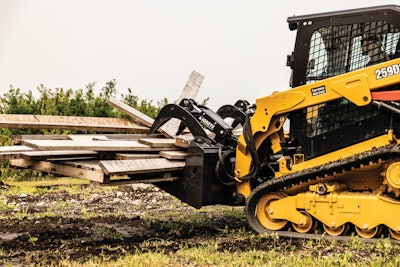 Grapples can offer contractors and landscapers many benefits if they have machines powerful enough to operate them. A grapple maximizes material handling capabilities by allowing the operator to hold materials within the bucket.Ignite Attachments
Grapples can offer contractors and landscapers many benefits if they have machines powerful enough to operate them. A grapple maximizes material handling capabilities by allowing the operator to hold materials within the bucket.Ignite Attachments
With a simple attachment like a bucket, the math might be easy enough. However, start adding additional components, like a grapple, and it’s worth taking a closer look at the exact weight breakdown.
Some manufacturers use advanced testing to determine exactly where reinforcements are needed. Finite element assessment testing uses a computer simulation to put potential attachments through the wringer. It identifies weak points in the design, allowing engineers to add reinforcements only in these spots, resulting in maximum durability and minimum weight.
By reserving more of the carrier's rated operating capacity for lifting and transporting heavy materials, operators can lift more and do more. This approach to design can also enable the use of certain types of attachments with compact machines.
Grapples are a good example. A lot these tools can offer contractors and landscapers many benefits if they have machines powerful enough to operate them. A grapple maximizes material handling capabilities by allowing the operator to hold materials within the bucket. Now imagine how many more pounds of debris an operator could safely transport in a single load.
It’s not as simple as “lighter is better,” though. Again, it’s important to consider the application. When it comes to augers, for example, heavier tools help provide the necessary power and downforce to get the job done.
Augers with a classic-drive system provide productive torque ratios at any rpm. This simple design provides fast, deep holes in tough soil conditions including clay, small rocks and frozen ground. Fewer moving parts and easy maintenance combine for a low total cost of ownership.
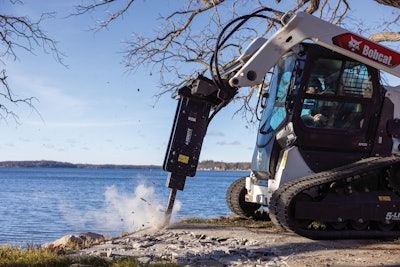 For more challenging digging conditions, a planetary drive will be a better long-term investment. This drive type will add extra weight, but the extra pounds make more of an impact. It’s similar with breakers.Ignite Attachments
For more challenging digging conditions, a planetary drive will be a better long-term investment. This drive type will add extra weight, but the extra pounds make more of an impact. It’s similar with breakers.Ignite Attachments
3. Should You Rent or Buy an Attachment?
More and more contractors and landscape outfits are taking advantage of equipment rental opportunities. When used correctly, this practice can help reduce overhead costs significantly. Key considerations for renting versus buying include:
- How often will the attachment be utilized? Is it needed for a single job or is it something crews will be using frequently?
- What maintenance is required? In general, more moving parts mean more maintenance. Downtime and replacement parts can quickly reduce an attachment’s ROI.
- Are there potential new revenue opportunities provided by the attachment? For example, would adding an auger allow a landscape company to take on more hardscape jobs? Could a grapple provide more opportunities for light demolition?
Asking these important questions can help determine if renting or buying will provide the best ROI.
Crunching the Numbers
The right tools can make or break a project, whether that’s a simple Phillips head screwdriver or something much larger—like a grapple, auger or breaker. By answering a few simple questions, professionals can quickly determine if the ROI on an attachment justifies the upfront cost.
Keep in mind that it still pays to shop around. Some aftermarket attachment manufacturers provide the same quality and dependability as traditional equipment brands but at a lower cost. For value-minded professionals, a quick online search might turn up new opportunities for high-quality, cost-effective attachments.

